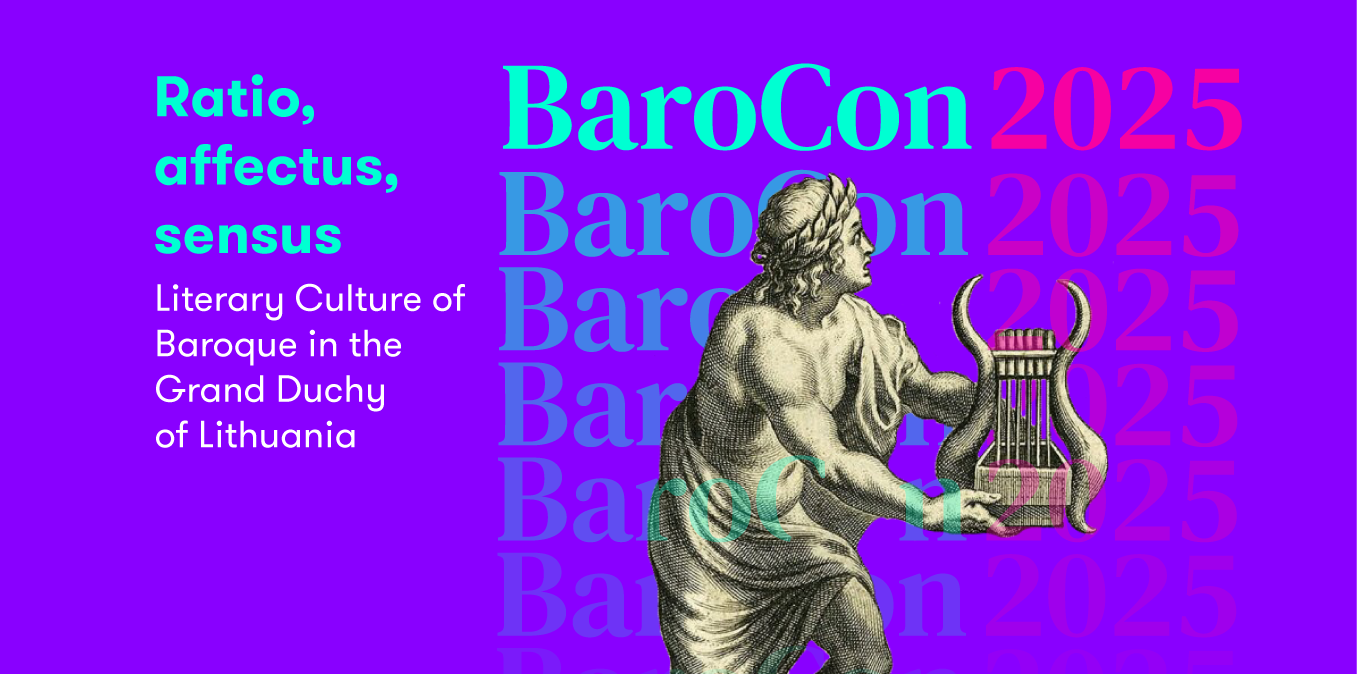Ratio, affectus, sensus: Literary Culture of the Baroque in the Grand Duchy of Lithuania
In 2025, we will commemorate the 400th anniversary of the first publication of Matheus Casimirus Sarbievius' most famous Latin poetry collection 'Lyricorum libri tres' (1625). This has led to 2025 being declared the Year of Baroque Literature in Lithuania. The eminent Jesuit neo-Latin poet of the Polish-Lithuanian Commonwealth, Sarbievius, has been hailed as the Christian Horace and the Sarmatian Horace. His theoretical thoughts on poetry and rhetoric are still highly regarded and have inspired new research on other concurrent themes and authors. This anniversary provides an opportunity to explore the extent and diversity of Baroque literary culture, which has seen a surge of interest in recent decades, both in the academic world and in popular culture. Therefore, the Institute of Lithuanian Literature and Folklore, together with the Faculty of Philology of Vilnius University, is organising an international academic conference "Ratio, affectus, sensus: Literary Culture of the Baroque in the Grand Duchy of Lithuania" on 25-27 September 2025 in the baroque city of Vilnius.
The aim of the multidisciplinary conference is to stimulate discussion on the literary culture of the "long seventeenth century" (from the end of the 16th century to the middle of the 18th century) in the Grand Duchy of Lithuania. This historical period, associated with dramatic changes and a general cultural crisis, is often described in contradictory terms and in constant tension between reason and senses, rigid structure and passions, classifications and impressions, etc. By embracing this contradiction, we invite an exploration of the theme in question through the lens of this dynamic interplay between reason (ratio), emotion (affectus) and the senses (sensus), which can be perceived in various genres of the period, such as poetry, biography, hagiography, rhetoric, private and public correspondence, and so on. The importance of the modern approach lies not only in what it can reveal about the Baroque in the Grand Duchy of Lithuania, but also about subsequent and contemporary literary culture, as scholars have demonstrated the continuing influence of a 'Baroque spirit'.
Event location
25–26 September the conference will take place at V. Krėvė (118) auditorium, Faculty of Philology
27 September the conference will take place at the Church Heritage Museum, Šv. Mykolo g. 9 (entrance from Maironio g. "Arkangelo konferencijų centras")
Keynote speakers

Ona Dilytė-Čiurinskienė
Senior Researcher, The Institute of Lithuanian Literature and Folklore
Prof Stephen Harrison
Professor of Latin literature, University of Oxford
Maria Chantry
Emotions and Attempts to Order Them in the Works of Maciej Kazimierz Sarbiewski
Maria Chantry
Emotions and Attempts to Order Them in the Works of Maciej Kazimierz Sarbiewski
Keywords: Sarbievius, emotions, Ignatian spirituality, inner freedom
In Ignatian spirituality, working on emotions and trying to put them in order is an important practice. This ascetic instruction was well known to Maciej Kazimierz Sarbiewski and finds expression in his works.
In my presentation, I am going to show the diverse range of emotions that emerge from the Jesuit's poetic works. These will include both positive emotions (e.g. joy, love, peacefulness) and negative ones (e.g. fear, sadness, anger). Sometimes, they are experienced by the lyrical subject and sometimes, by the characters in the works. The analysis will be based on the collection: Mathiae Casimiri Sarbievii Lyricorum libri IV. Epodon liber unus alterq[ue] Epigrammatum. Antwerpiae, ex officina Plantiniana Balthasaris Moreti MDCXXXII.
When depicting affects, Sarbievius uses various ways of poetic imagery (e.g. the wax image of Nero melting from his anger in the Epigram LXI). In addition to the description and images of emotions, their social context and their effects are also important. We will also look at suggestions for „therapy”, ways of putting emotions in order and striving for inner harmony and freedom giving independence from temptations and the whims of Fortune.
A certain commentary on some of the poetic imagery used by Sarbievius is provided by his treatises on poetics (e.g. Characteres lyrici seu Horatius et Pindarus) and mythology (Dii gentium), in which, for example, two different types of love are described: Amor aethereus and Amor vulgaris. It will thus be possible to juxtapose poetic practice with the theoretical reflections of the Sarmatian Horace.


